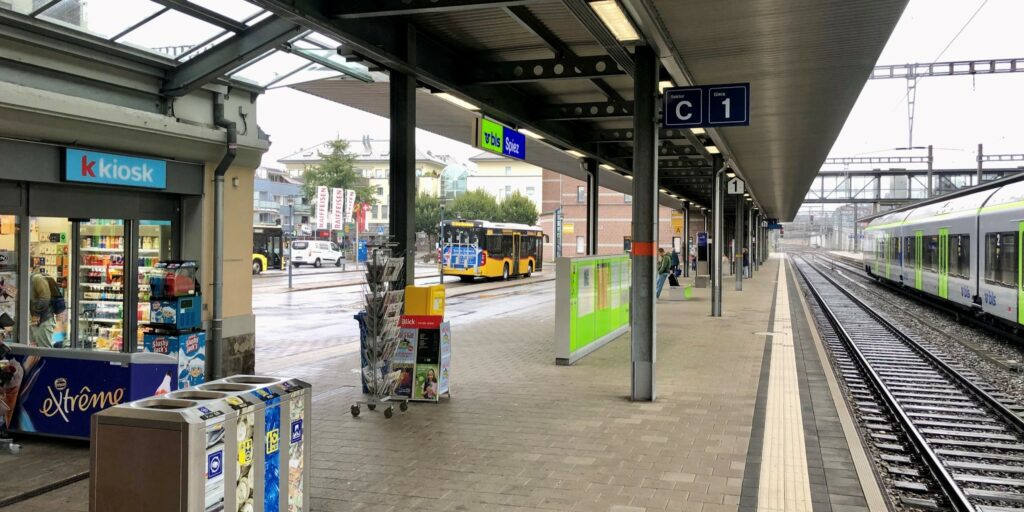GDT > New Train For Colorado
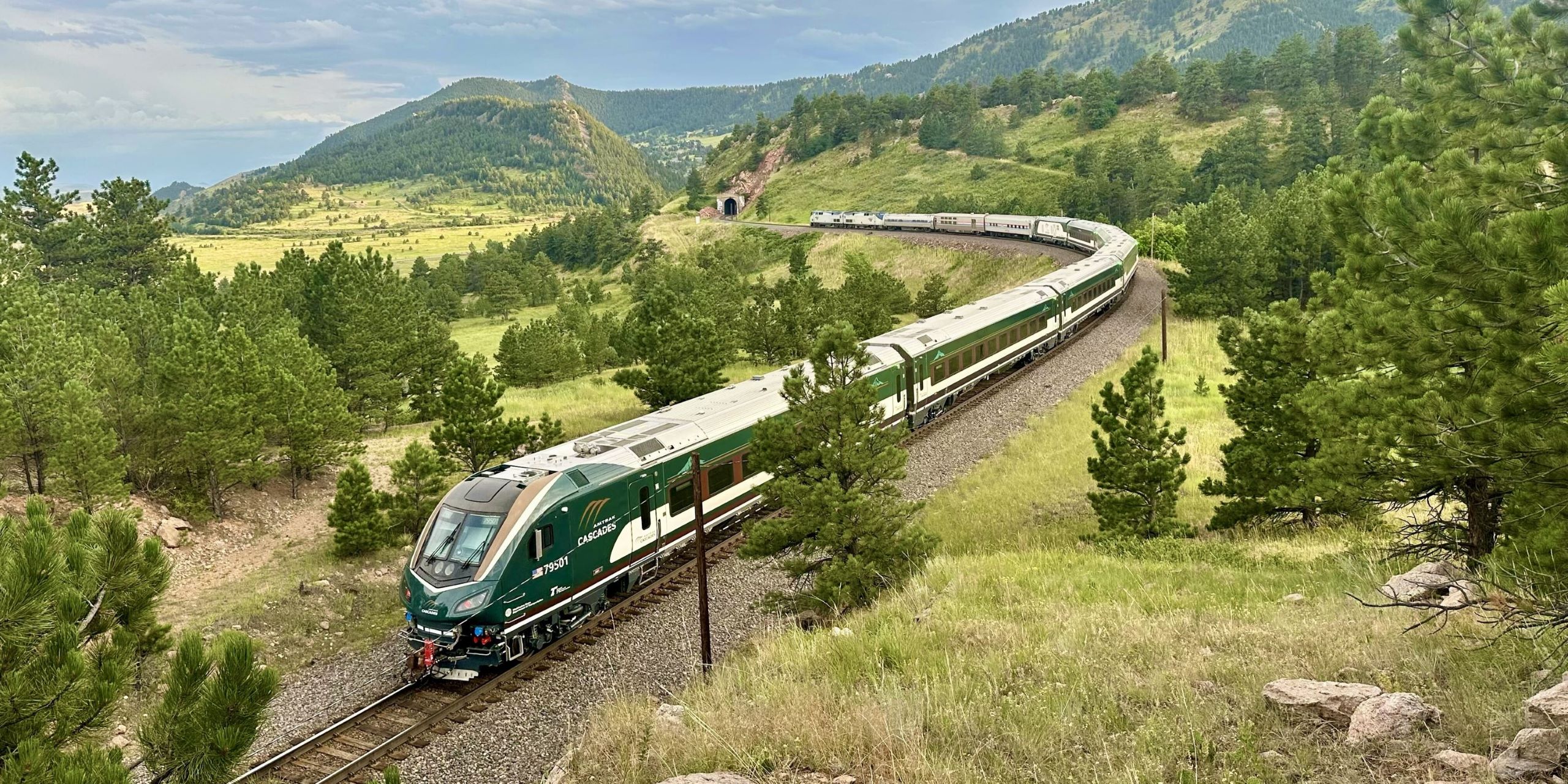
The ‘New Train for Colorado’ concept envisions a modern fleet of fast, lightweight, and highly-efficient intercity passenger trains designed to connect towns and cities across the state with attractive and comfortable onboard amenities.
Currently, the State of Colorado is advancing two transformative passenger rail projects which are Mountain Rail, connecting Denver to Granby and eventually Steamboat Springs, and Front Range Passenger Rail (FRPR), a new north-south corridor linking Fort Collins, Denver, Colorado Springs, and Pueblo.
Because these services will primarily run on freight-owned rail lines, Colorado must work within technical and regulatory constraints that limit full electrification and require compatibility with the envelope of wider freight trains. Choosing the right train design will impact reliability, accessibility, emissions, maintenance and operational costs across both corridors.
Locomotive-hauled or multiple-unit trains?

There are two primary types of passenger trains:
- Locomotive-Hauled Trains (LHTs) feature a separate locomotive pulling unpowered passenger cars. This traditional format is widely available in the U.S. and offers operational flexibility—cars and locomotives can be swapped independently. However, LHTs are heavier, accelerate more slowly, and create more wear on tracks compared to modern multiple-unit designs.
- Multiple-Units (MUs) are train sets where several or all cars have motors and can provide propulsion. MUs are generally lighter, faster, and require less platform space than LHTs, but have more limited availability in the US. They can also be more complex to service as they typically must be taken out of operation as a complete set when major issues arise.
Rolling Stock Comparison
| Train | Locomotive-Hauled | Multiple-Unit | |
| Acceleration | X | ||
| Fuel Consumption | X | ||
| Availability in the U.S. | X | ||
| Reconfigurability / Speed of Repair | X | ||
| Platform Space Efficiency | X | ||
| Track Wear & Tear | X |
How will the trains be powered?

The train’s motive power—how it moves—matters greatly in both emissions and infrastructure compatibility:
- Diesel is currently the most practical and widely-supported power source, especially on mountainous or long-distance routes without overhead wires.
- Electric power offers zero local emissions and strong acceleration but requires costly infrastructure installation of overhead catenary systems (OCS) or electrified 3rd rail systems, which are typically restricted on freight corridors.
- Battery-electric and hydrogen fuel cell technologies are emerging alternatives, but they currently lack the range, reliability, and local refueling infrastructure for full statewide deployment in Colorado’s terrain.
To balance emissions with practical constraints, dual-mode or bi-mode trains, which can switch between diesel and overhead electric power, are strongly preferred. These hybrids allow clean, electric operation within cities like Denver which have OCS infrastructure, while maintaining diesel capability for rural or mountain segments.
What could the train interiors be like?
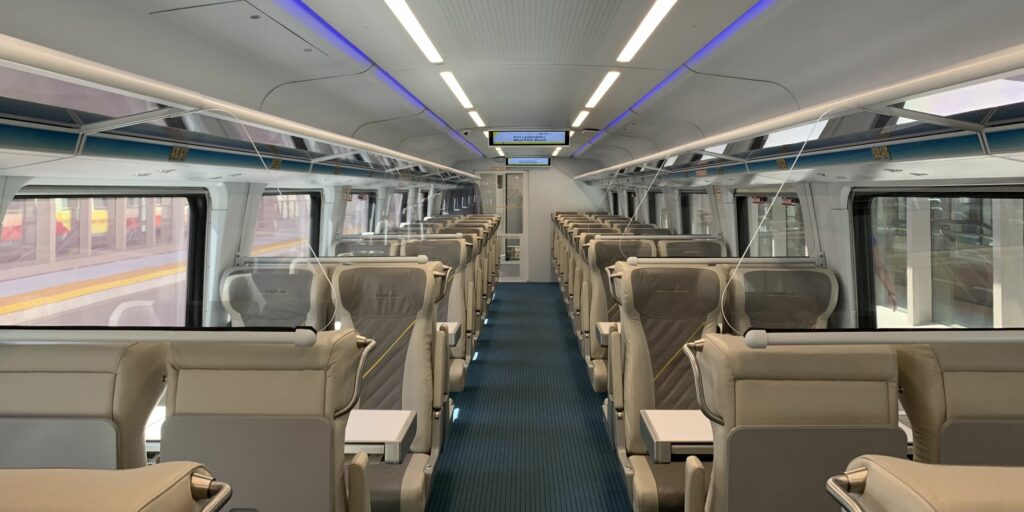
Intercity trains in Colorado will serve longer routes of 1-8 hours in length. In comparison to shorter commuter routes, these trains should be equipped with additional amenities that prioritize comfort for passengers.
- One or more restrooms per coach car
- Comfortable Seats (softer than commuter seats) that recline
- Seating that lines up with large windows to maximize view
- At-seat power for charging of personal electronic devices
- Accent lighting that fosters a calm and relaxing interior cabin
- Information screens that indicate destination, next stops, altitude, exterior temperature, compass/direction, and key tourist/journey facts
- Automatic doors that separate seating from the vestibule areas to reduce in-cabin noise
Platform Heights – A Key Accessibility Challenge
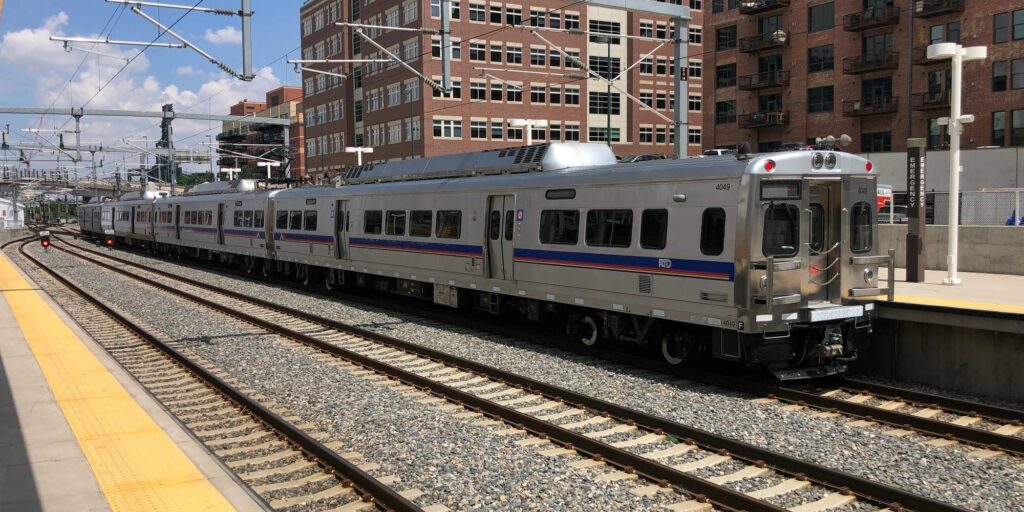
Another critical design consideration is platform height, which affects how easily passengers, including those using mobility devices, can board trains:
- High-floor trains (typically 51 inches above the rail) enable level boarding from equivalent high platforms, allowing fast, independent boarding. The majority of existing intercity passenger rail equipment in North America is high-floor, and is also compatible with the majority of tracks at Denver Union Station. However, high platforms are usually prohibited on freight corridors without dedicated station sidings.
- Low-floor trains (24 inches) and very-low-floor trains (18 inches) are more compatible with freight corridors where high platforms are not allowed but usually require ramps or lifts for boarding ADA passengers unless dedicated sidings or new boarding tech (like auto-extending bridges) are built. Most commuter equipment in North America is 24” low-floor that does not allow boarding without assistance for ADA passengers in any configuration. Long-distance Amtrak train equipment is 18” very low floor, and while it does not allow boarding without assistance today, could be adapted with auto-extending ramps that bridge down to an 8” platform, the highest platform allowed on Class I host freight railroad tracks.
Because Colorado passenger rail will need to connect high-platform terminals like DUS and Denver International Airport (DEN) and low-platform freight-owned mountain corridors, equipment must be carefully chosen to support accessibility across this varied infrastructure. High-floor equipment is required at Denver Union Station for any frequent intercity service (6/8 tracks are high-platform). However, mountain corridors have stations like Winter Park and Glenwood Springs where high-floor platforms will be impractical without significant cost even with freight-host consent.
Initially, it may not be possible to operate a single passenger rail fleet statewide, though if a LHT standard is chosen over an MU standard, selecting a single type of dual-mode locomotive that can pull either a high-floor consist over the partially-electrified Front Range corridor or a low-floor consist over the largely-dieselized Mountain Rail corridors could provide a balance of sustainability with operational flexibility. For any LHT whether high-floor or low-floor, cab cars must be standard which allows the train to switch directions without needing to be turned around.
Who Builds These Trains?
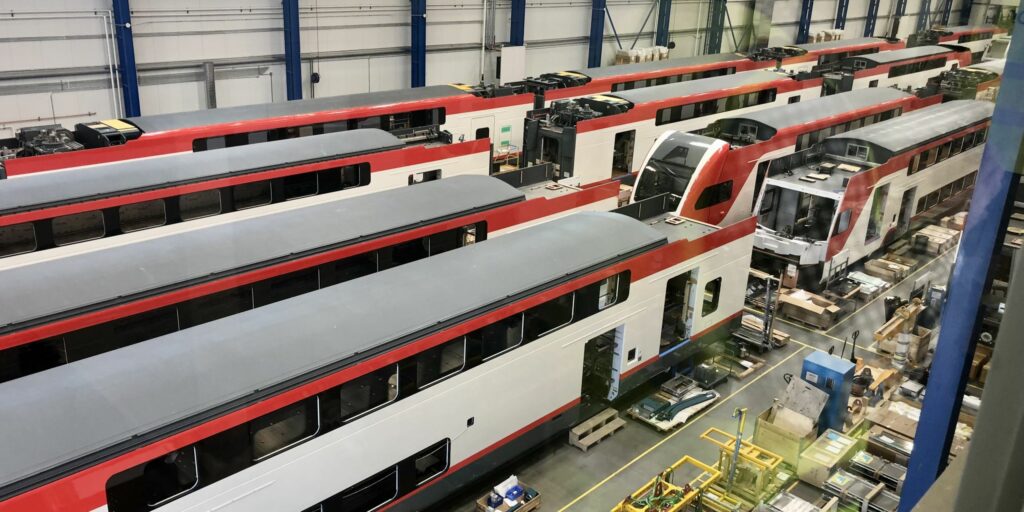
As of 2025, only three manufacturers produce FRA-compliant passenger rail equipment at scale in the United States:
- Alstom – Widest offering with a dual-mode locomotive and both high-floor and low-floor train cars including bi-level options. While multiple unit trains are offered, Alstom currently may not have a diesel multiple unit variant approved by the FRA. Thus, the LHT offering with coaches is the only known diesel-powered offering that can be purchased for Colorado without major customization.
- Siemens Mobility – Best-selling passenger offering in North America with modern, low-emission diesel locomotives with bi-mode capabilities via auxiliary battery cars and single-level, high-floor coaches. Does not offer any multiple unit or low-floor fleet options in North America.
- Stadler Rail – Specializes in modern MU trains focused on low-floor designs including the single-level FLIRT and multi-level KISS platform with diesel, electric, battery, and dual-mode options. Does not offer any locomotive-hauled trains that are approved by the FRA, and has a minimal high-floor offering.
Key Takeaways
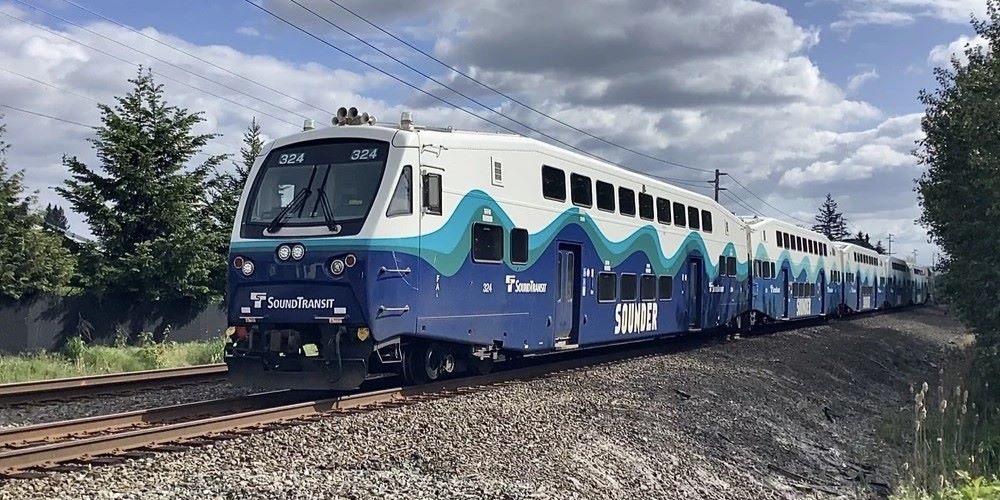
For Colorado on the whole, bi-mode/dual-mode trains that can run on diesel or overhead electric power will provide the best path forward in either a multiple unit spec (EDMU) or a locomotive-hauled spec with cab cars. These designs support efficient turnarounds, can serve both urban and mountainous regions, and balance emissions with operational flexibility.
The state should set a path toward a permanent fleet with a standardized floor height at the 51” high-floor standard. While the wide availability of 24” low-floor commuter cars on the secondhand market may make the acquisition of a low-floor fleet in the near term an attractive proposition, the high-floor infrastructure at Denver Union Station, Denver International Airport, and all new Amtrak equipment being high-floor provides a compelling case for the 51” high-floor standard to be adopted statewide in Colorado.
If low-floor equipment is planned to be used initially, perhaps due to availability or financial considerations, there should be a clear path to replacement with a high-floor fleet that is compatible with RTD and Amtrak’s intercity standard. While ADA high blocks and / or lifts will be required for the 8” very low-floor platforms allowed on blended freight corridors initially, it is vital that every planning effort be made to drive toward providing high-floor platforms (with associated dedicated track and / or station sidings) to achieve boarding without assistance at these stations in a 25 year timeline.
For the Front Range, achieving any frequency in intercity passenger rail service from Denver Union Station will require high-floor equipment (favoring the longer track 8 at DUS), dedicated station sidings outside of Denver Union Station, and a carefully-crafted station expansion plan. The challenges of the Front Range Passenger Rail corridor may require a phased approach to expand, so it is vital that any passenger equipment acquired and any station infrastructure constructed in the earlier phases be adaptable into a fully built-out scope that involves double/triple/quad track and partial state/public acquisition of some right-of-way currently owned by freight railroads.



